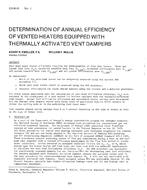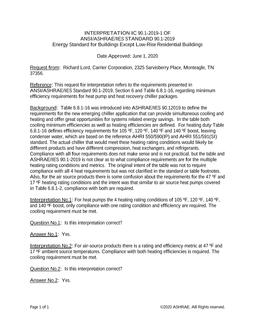This paper examines the effects of residential heat pump and furnace duty cyclers from the standpoint of HVAC system performance and equipment. Three distinct classes of duty cyclers are treated: utility controlled duty cyclers, freestanding multiunit demand limiters, and short-interval freestanding interrupters. The characteristics and effects of these three types of duty cyclers can be dramatically different.
While furnace effects can be treated reasonably well as one topic, heat pumps require separate consideration of four modes of operation: high load cooling, low load cooling, high load heating (below the balance point), and low load heating. In each of these operating conditions or modes, the operating parameters to be considered include power demand, comfort, efficiency, and energy consumption. These factors are addressed on a relatively simple, first-principles basis so that the conclusions can be generalized.
Since duty cyclers cause a departure from normal operation, equipment manufacturers are concerned about the potential for adverse effects on users’ comfort and the cost of operation and potential for adverse effects on equipment reliability or durability.
Units: I-P
Citation: Symposium, ASHRAE Transactions, 1987, vol. 93, pt. 1, New York, NY
Product Details
- Published:
- 1987
- Number of Pages:
- 13
- File Size:
- 1 file , 1.1 MB
- Product Code(s):
- D-NY-87-19-3


